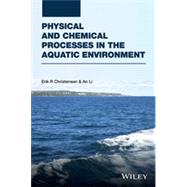- ISBN: 9781118111765 | 1118111761
- Cover: Hardcover
- Copyright: 9/15/2014
There is need in environmental research for a book on fresh waters including rivers and lakes. Compared with other books on the topic, this book has a unique outline in that it follows pollution from sources to impact. Included in the text is the treatment of various tracers, ranging from pathogens to stable isotopes of elements and providing a comprehensive discussion which is lacking in many other books on pollution control of natural waters. Geophysical processes are discussed emphasizing mixing of water, interaction between water and the atmosphere, and sedimentation processes. Important geochemistry processes occurring in natural waters are described as are the processes specific to nutrients, organic pollutants, metals, and pathogens in subsequent chapters. Each of these chapters includes an introduction on the selected groups, followed by the physicochemical properties which are the most relevant to their behavior in natural waters, and the theories and models to describe their speciation, transport and transformation. The book also includes the most up to date information including a discussion on emerging pollutants such as brominated and phosphate flame retardants, perflurochemicals, and pharmaceutical and personal care products. Due to its importance an ecotoxicology chapter has been included featuring molecular biological methods, nanoparticles, and comparison of the basis of biotic ligand model with the Weibull dose-response model. Finally, the last chapter briefly summarizes the regulations on ambient water quality.







